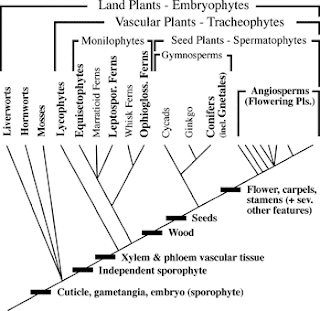Question: Describe aims,
objectives and importance of plant systematics (classification).
Answer: Classification is the
arrangement of plants into groups having common characteristics. These groups
are arranged into a system. Similar species of flowering plants are placed in a
Genus, similar genera grouped into families; families with common features are
arranged into orders; orders into classes and classes into divisions.
The aim of classification is to place the plants into a hierarchy of
ranks or categories such as species, genera, families and so on. In addition to
expressing relationship based on common features, classification serves as a
filing and information retrieval system and allows easier reference to
organisms comprising the filing system i.e. it provides an idea bout the
sequence of evolution of plants from simple to more complex and from more
primitive to more advanced types.
The criteria of the classification are the characters on which the
classification is based. The characters of an organism are all the features or
attributes (leaf width, stamen number, corolla length, locule number,
placentation, etc) possessed by the organism that may be composed, measured,
counted, described or otherwise assessed. This means that indifferences,
similarities and discontinuities between plants and taxa are reflected in their
character. The characters of a taxon are determined by observing or analyzing
samples of individuals and recording the observations or by conducting
controlled experiments.
Certain characters which are used in description, delimitation or
identification are called Diagnostic characters, whereas the characters of
constant nature which are used to help define a group are termed as synthetic
characters. A character may be qualitative character when it refers to such
things as flower colour, odour, leaf shape etc. or quantitative character when
it expresses the features that can be counted or measured such as size, length,
and breadth, etc. Important characters are:
(i) to provide information for construction of taxonomic system.
(ii) to supply characters for construction of keys for
identification.
(iii) to furnish features useful in the description and delimitation
of taxa; and
(iv) to enable the scientists to use predictive value of
classification.
Morphological and anatomical characters are used for the purpose of
classification. Structures are observed with the eye, hand lens or light microscope
or by using scanning electron microscopy (SEM). Modern instrumentation allows
comparative studies of physiological rates such as photosynthesis and analysis
of chemical compounds produced by the plants. For classification purpose, there
is increasing use of evidence from the fields such as cytology, biogeography,
paleo-botany, phyto-chemistry, population biology, molecular biology and ulra
structure.
Vegetative parts of angiosperms such as leaves stems and roots are
relatively large and easy to observe but they generally provide fewer
characters for classification than reproductive structures such as sepals,
petals, stamens, and pistils. Vegetative features of flowering plants,
especially size and shape, tend to be more influenced by environmental features
than are reproductive features. As a result certain vegetative characters are
less reliable and less useful than reproductive characters in classification of
plants.
Union of sepals, petals, stamens and corpels;
epipetalous condition, placenlation, hypogyny, epigyny and perigyny; number of
cotyledons, presence and absence of endosperms, structure of fruit and seed are
common reproductive characters used for classification. Phylotais, venation and
presence of absence of stipules, are vegetative characters used for
classification.



.jpg)

0 Comments